Cushmania: Reconstructing Queerness and Celebrity of a Nineteenth-Century Actress
Conference Paper for Digital Humanities and Gender History (Feb 5, 2021) organized by Prof. Dr. Mettele, Pia Marzell, and Martin Prell
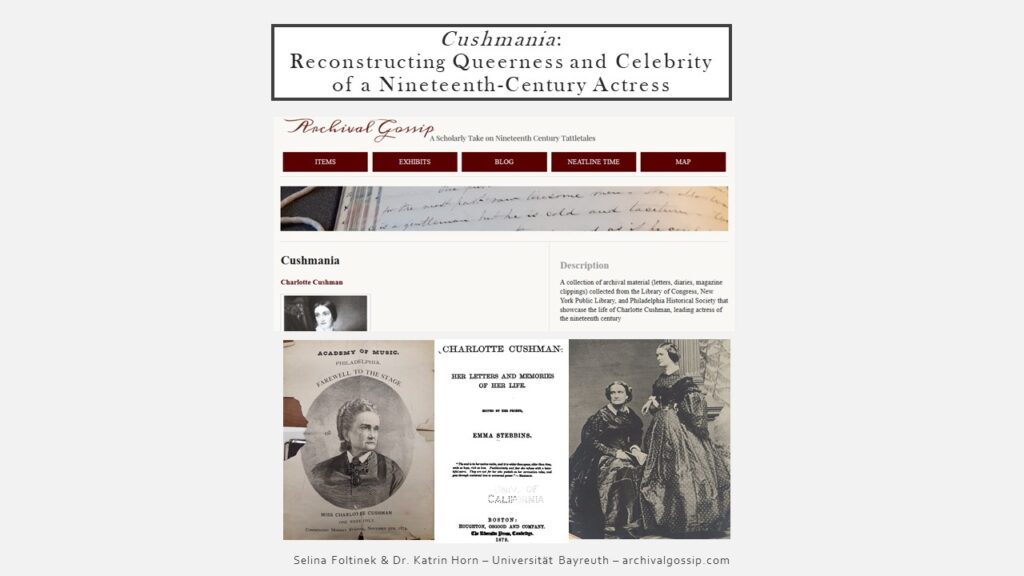
[Katrin] Introduction: Who We Are and What We Are Doing
Thank you to the organizers for having us today and thank you to everyone for your interest in “Cushmania: Reconstructing Queerness and Celebrity of a Nineteenth-Century Actress.”
Almost exactly 162 years ago to this day, the US American public learned that Miss Hosmer and Miss Cushman lived happily together in Rome. Now you are forgiven if you don’t recognize either of these names. I guarantee you, however, had you lived back then, you would have known Charlotte Cushman. Cushman was one of the most famous, most talked about women of her time – which you probably can guess from this little snippet, the same way that you already get a hint of her queerness.
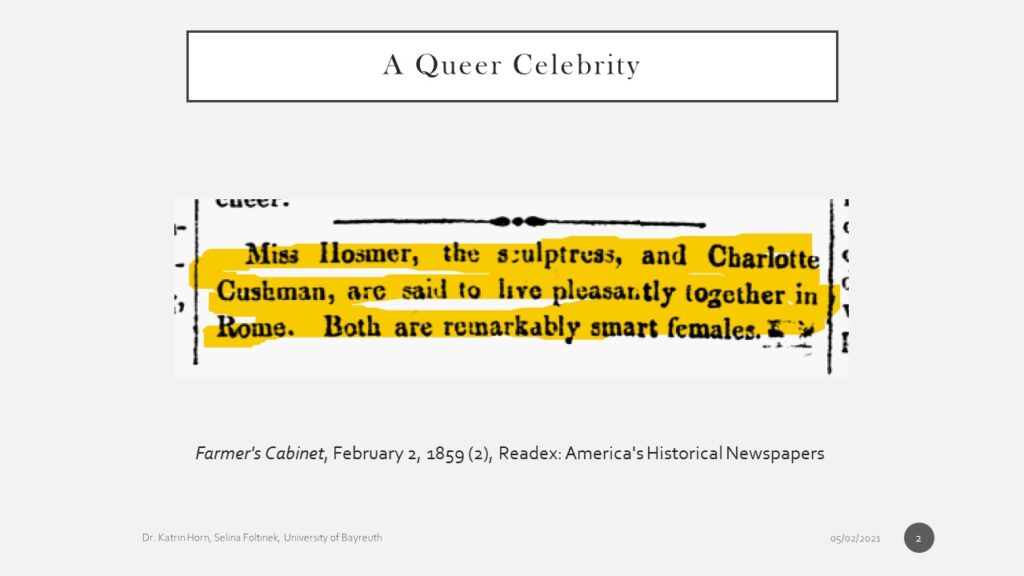
Today, we (Selina and me, who shoulder this project together) would like to present parts of our ongoing research project entitled “Economy and Epistemology of Gossip in Nineteenth-Century US-American Culture,” for which we have built the website archivalgossip.com – which includes, among others, the collection Cushmania. Cushmania is an online database documenting the public reception and private life writing of actress Charlotte Cushman (1816-1876) via material collated from various US-American libraries and archives.
Cushmania to us is several things:
Blog Series: Working on Intimate Knowledge with Archival Documents (3/3)
Concluding Remarks
The Archive as a Space that Actively Shapes Narratives
Further problems that we have encountered were that parts of letters may be missing, letter pages may be assembled in the wrong order or they were assigned to the wrong historical agent (LoC, CCP 10: 3004-3007). Transcribing the documents, we noticed from time to time that a folder contains other senders or addressees as those indicated on the compiled folders. In such cases, it is important to question the arrangement of historical documents by the archives/archivists. Dever et al. remind us that the archive is a space that constructs narratives based on the knowledge that archivists have about the collections and their comprised documents:
[A]ny contemporary discussion of archival research must begin by acknowledging the epistemological pressure placed upon the concept of ‘the archive’ in recent years. This pressure has marked a turn away from the positivist understanding of archival repositories as being mere storehouses of records, toward considering the status of the archive as a significant element in our investigations. Ann Laura Stoler characterises this shift as the ‘move from archive-as-source to archive-as-subject’. […] [Jane Taylor’s] conclusion–that the archive is ‘at once a system of objects, a system of knowledge and a system of exclusion’–points to the profoundly constructed and deeply political nature of the archive, challenging many hitherto basic assumptions about ‘archival fixity and materiality’.
(Dever et al. 105, 118-119)
Critiquing her own use of private documents and tacit knowledge in archival documents, Sally Newman challenges her own position as a researcher to discuss her initial research focus and the assumptions with which she worked on the material at first, oscillating between nostalgia and fantasy. She researched in the Smith College archive to investigate same-sex desire:
I was drawn by their colour and materiality, even as it seemed there was something other-worldly about the splashes of brilliant blue that lit up the dour grey pages of the thick leather-bound books in which students immortalised their college experiences. This paradoxical presence/absence only heightened my desire for these objects and allowed me to indulge in the fantasy of seeing through these miniature portals into another time and place. I enjoyed the delight that was obvious on students’ faces in their playful mugging for the camera at ‘Mock Weddings’, which seemed to capture the spirit of this progressive ‘Adamless Eden’ that I was experiencing vicariously as I worked my way through the archive.
(Newman 153)
Newman concludes that her “desire (for these objects, for what they represented for my project) had prevented … [her] from seeing that these artefacts were linked by something more obvious: the desire to memorialise experiences and culture” (Newman 157). She calls for using the term ‘archive’ in the pural since what researchers make of the material they encounter is exposed to interpreting skills coming from all sorts of different angles: “There is no single archive because readers will construct their own ‘archive’ from the artefacts they choose to highlight, ignore or pass over” (Newman 155). Hence, our online archive and exhibits are a particular way of storytelling. The Omeka collection is constantly evolving in terms of size and specificity. In the DFG project, we trace gossip as a form of knowledge production and circulation in auto/biographical writing (both published and private) to investigate women’s (individual and communal, secret and shared) strategies in dealing with socio-cultural forces of financial speculation, the re-evaluation of privacy, and new forms of participation in the public sphere. For the Omeka collection, we have focused on actress Charlotte Cushman so far. The collected and digitized material is not limited to documents that explicitly mention gossip. The collection comprises
Read moreBlog Series: Working on Intimate Knowledge with Archival Documents (2/3)
Working with or Deciphering Archival Documents
Dever et al. point out that the demonizing of gaps in archival research nurtures the illusion of some kind of coherent history that can be discovered:
The challenge […] becomes one of how to read and work with these fragments, given that, as researchers, ‘we are generally dismayed by the gaps that fragments expose, and try to fill them’. We often harbour an insistent (deeply suppressed and often denied) desire to find in our archival sources a whole where there can only ever be random parts, to perform acts of reconstitution in the service of producing a coherent and seamless account of our subject. […] How, then, do we live with – and work with – the patterns of knowing and not knowing thrown up by these sources … .
(Dever et al. 100–01)
It is tough to cast this urge to find the ‘truth’ (the ‘full historical truth’) aside, since it is difficult to accept that we may never know it or, in fact, that there was never such a truth. What researchers can achieve, however, is a process of sense-making of fragments in the archives, which gives a voice to often forgotten historical agents and presents new perspectives on historical events, lives, and constellations. This being said, do not let me deceive you, it is an ongoing struggle to happily coexist with the fragments. How often have we desperately hoped for a historical document that explains it all to magically pop up? Too many times. How often will that happen again in the next months? Way too often. Sometimes, we were successful and it is those times that stick with us. They keep us going to dig deeper. In doing so, we were facing several issues of working with and deciphering archival documents.
Read moreBlog Series: Working on Intimate Knowledge with Archival Documents (1/3)
In letters, scraps of notes or a diary entry, we are offered some of the most fragmented and ephemeral textual traces of a life and the intimate connections that structured it. But while we sometimes conflate the private and the confessional, there is no guarantee that what we will find preserved within someone’s personal papers will necessarily offer clarity of insight or confirmation of intent.
(Dever et al. 122)
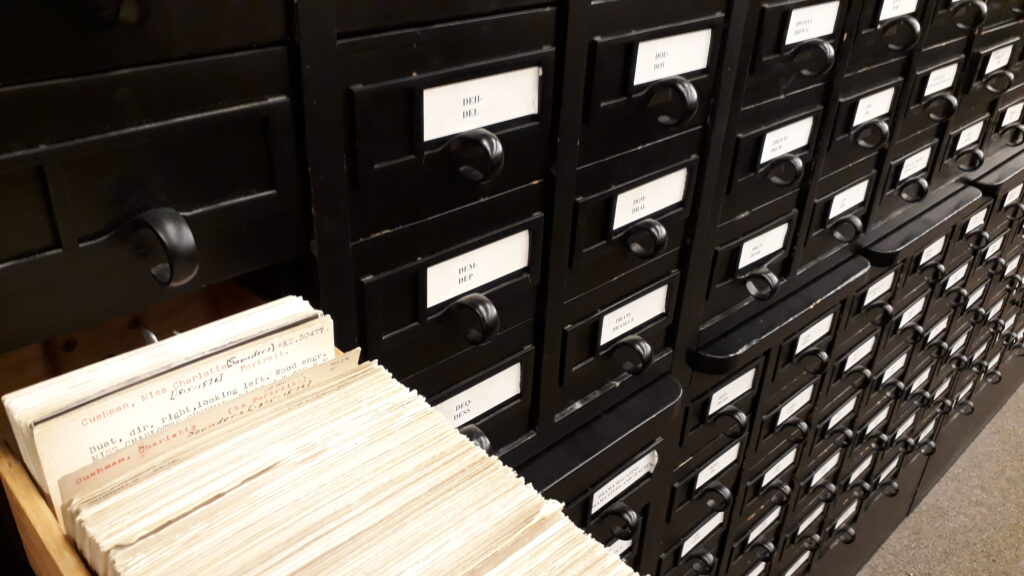
In our research on Charlotte Cushman in terms of gossip and reputation management, we mainly work with archival documents with intimate knowledge. They do not necessarily “offer clarity of insight or confirmation of intent” (Dever et al. 122). but implicitly touch upon Cushman’s ambition to construct a most favorable public image of herself as a respectable and successful actress. For instance, Cushman wrote to or received long letters from her romantic partners that inform the correspondent about press reports, attempts to conceal certain parts of her private life or build a network in foreign countries such as England and Italy between the 1840s and 1860s. Additionally, many of the biographies and articles we deal with often build on intimate knowledge. Today, I introduce a blog series that revolves around the perks and intricacies of archival research, and takes into consideration the form of intimate knowledge that is constitutive of gossip. We will post a small series of entries covering the topics of accessing archival documents, deciphering them, and working with/creating intimate, archival narratives.
While Katrin Horn’s blog post to the GHI blog ‘History of Knowledge’ discusses the significance of gossip as a form of knowledge, this blog entry engages with practical questions and implications for our archival research, which address tacit knowledge and a woman who polarized her audiences transatlantically both on and off the stage. Issues range from accessing and deciphering archival documents to making use of intimate knowledge accounts.
Read moreBut wait, there’s more! (Cushman-related material online)
Did you come here looking for something that you did not find? Are your research travels cancelled and you’re looking for other ways to stay busy? Or were you simply so intruiged by our Cushman-collection that you want to read even more about this fascinating actress? Either way: you’re in luck! Thanks to Cushman’s large social network, letters sent and received by her, and numerous other texts that mention her are widely available in other digital archives.
So, in the hope that it might proof useful to some fellow American studies folks, celebrity studies people, (gender) historians, and who else might profit from nineteenth-century primary material, here’s a collection of digital sources we have relied on repeatedly in our own research.
(Stay tuned for updates, and get in touch, if you have any questions!)
Archives of Queer Intimacy
(or: musings on past obsessions and a new publication)
In my attempts to make sense of my encounters with ‘the archive’, I’ve stumbled upon Maryanne Dever’s article “Garbo’s Foot, Or, Sex, Socks, and Letters” (2010), which not only namechecks about 50% of my interests in its title, but also – and more importantly – makes a wonderful case for archival absences (“nothing”) as evidence. The introductory paragraph reads as follows:
In November 2006 I found myself staring at item no. 80 from Box 23 of the Greta Garbo material held at the Rosenbach Museum and Library in Philadelphia […] this visit was the culmination of a six-year desire to see what ‘nothing’ looked like.
(Dever 2010 163)
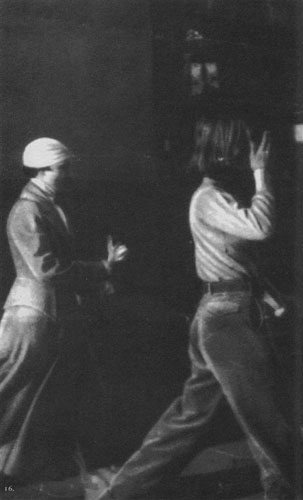
“Nothing,” of course, being the relationship between Greta Garbo and Mercedes de Acosta – according to the Rosenbach Museum and other “stake holders” in Garbo’s posthumous fame, a wishful thinking, a figment of people’s imagination. Certainly not a defining part of the life and legacy of one of cinema’s most enigmatic stars.
If we count more metaphorical archives (of popular culture, of auto/biographies), then I’ve searched them for “something” – meaning, traces, evidence, inspiration, whatever you wanna call it – where “nothing” was supposed to be for a very long time. In my early twenties, I devoured biographies like Barry Paris’ Garbo and de Acosta’s infamous Here Lies the Heart. I might have watched more movies and series for subtext than for main text. Always sure, there was something. (I’m not claiming my interest in gossip is neutral.)

Attic to Archive
On the Provenance of the Charlotte Cushman Papers at the Library of Congress, Washington, DC.
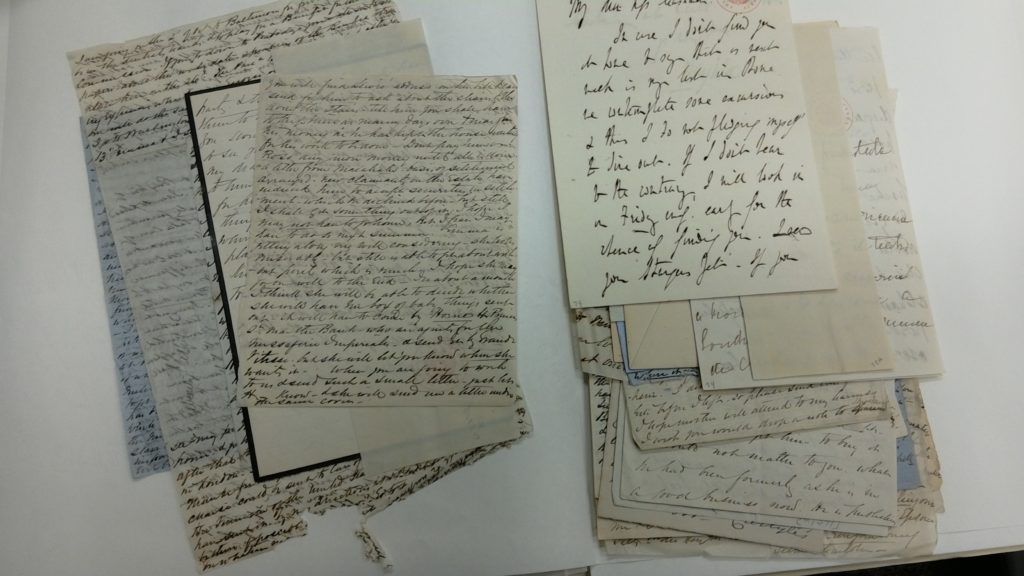
Much of the material I read for our research project (letters, diary entries) is of a very private nature. This raises ethical concerns as well as methodological issues:
But what does it mean to begin to sift the available traces of someone’s life? Where do the boundaries lie between private lives and public scrutiny? […] How do we make sense of surviving traces of their private lives that have found their way into public archives? What protocols govern scholarly attention to these particular aspects of the archival record?
Dever, Maryanne, et al. “The Intimate Archive.” Archives and Manuscripts, vol. 38, no. 1, May 2010, pp. 94–137.
It also raises very practical questions – some of which struck me immediately upon sitting down in front of one bound book of Charlotte Cushman’s personal correspondence (decyphering the handwriting, storage of data), some of which took a while to dawn on me. Most importantly:
How did these letters get here???
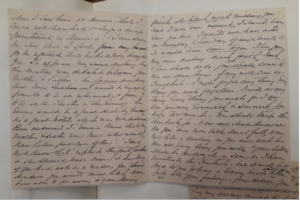
History Of Knowledge
Blog Post on Gossip

After my research stay at the German Historical Institute in Washington, DC, last spring, the editors of their History of Knowledge-Blog kindly invited me to contribute a blog post on gossip’s relevance to studying the history of knowledge.
My thoughts on gossip, queer history, and archives entitled “An Intimate Knowledge of the Past? Gossip in the Archives” can be found here.
Besides some theoretical observations about what defines gossip and how we know history, the post also has ALL the drama of Charlotte Cushman’s most notorious break-up.

)
Euphemism Challenge
A (growing) list of the best, worst, and – quite frankly – weirdest descriptions of Cushman’s relationships (with friends as well as lovers).
What’s gossip without a fitting code, after all?
- “Both Nathanial and Sopia Hawthorne, nonetheless, took an instant liking to the young sculptress [Hosmer] on a visit to her studio in 1858, but William Story frowned on these independent females, who struck him as a distasteful crowd of Bohemians.” (Paul Baker, Fortunate Pilgrims. Americans in Italy, 1800-1860, 1964)
- “Charlotte Cushman allowed her friend Emma Stebbins to edit her memoirs and letters just before her death.” (Nan Mullenneaux, Staging Family: Domestic Deceptions fo Mid-Nineteenth-Century American Actresses, 2018) [I find this one particularly galling, since the author repeatedly quotes from Merrill, and yet … ‘her friend’]
- Emma Stebbins “formed a warm friendship with Charlotte Cushman, in whose shadow she thereafter contentedly lived.” (Margaret Farrand Thorp, The Literary Sculptors, 1965)
- “harem (scarem) as I call […] the emancipated females who dwell there in heavenly unity; namely, the Cushman, Grace Greenwood, H., S.,and Co.;” (William Wetmore Story to J.R.Lowell, 1953, qtd. in (William Wetmore Story and His Friends, Vol. 1, Henry James, 1903)